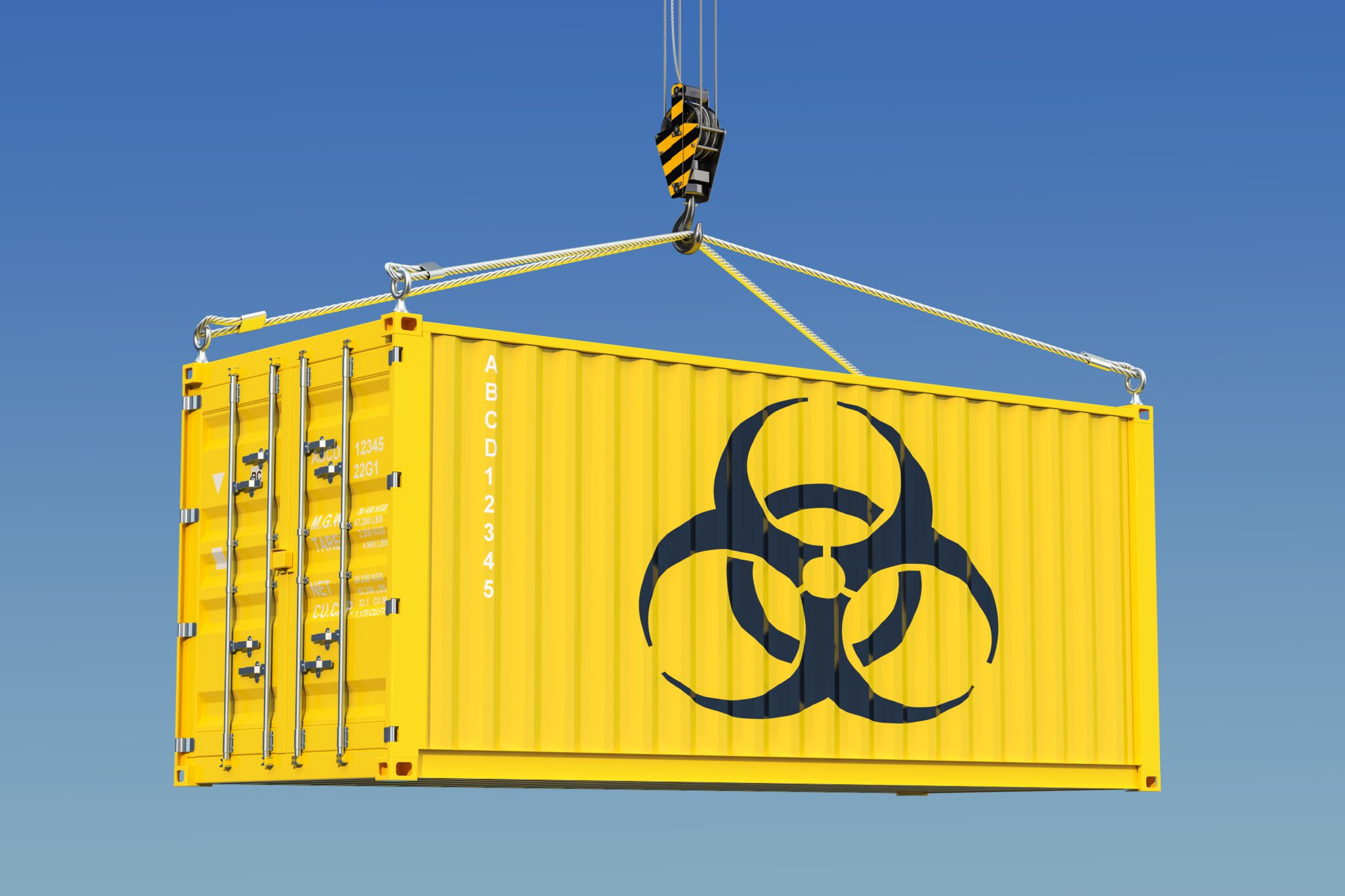
When it comes to hazmat transportation, packaging hazardous materials for shipment is a crucial aspect of the process and is subject to regulatory requirements. These regulations are overseen and administered and enforced by the US Department of Transportation (DOT) or through one of its agencies such as the Federal Aviation Administration (FAA), the Pipeline and Hazardous Materials Safety Administration (PHMSA), or the Federal Motor Carrier Safety Administration (FMCSA). Shipping hazardous materials may also be subject to local and state regulations that the shipper must be aware of and comply with.
Who is Responsible for the Hazardous Material?
By law, it is the shipper who bears responsibility for correctly classifying and packaging the material. There are a number of steps that need to be followed to ensure packages containing hazardous materials have the correct labeling and shipping documentation. Though preparing a hazardous material for shipment is a process that, realistically, follows a certain number of steps and procedures, it should nonetheless be carried out by trained personnel familiar with the hazards posed by the material as well as the applicable regulations for packaging it.
With regard to the latter, it is important to note that hazardous materials regulations have changed significantly in recent years, and continue to be updated and changed. International shipping is one area in particular that has seen many changes, in large part, to facilitate international commerce. These changes are intended to provide consistency between US hazardous materials regulations and international standards. When packaging for international shipments then, be sure to follow the appropriate regulations and guidelines for that material.
How to Properly Package Hazardous Material for Transport
Follow Classification Requirements
The first step in packaging a hazardous material for shipping is in knowing the specific DOT transportation hazard classification criteria for materials. There are nine classes of hazardous material. Classification is based on the chemical and physical properties of the material—is it flammable, corrosive, toxic, explosive, etc. Shippers can look to the manufacturer’s Safety Data Sheet (SDS) and-or to the Hazardous Materials Table listings under Title 49 of the Code of Federal Regulations (CFR). Both sources can be found online. The SDS is a hazard communication standard for downstream users on a given hazardous chemical material. It provides important information on the hazardous properties of the material and, among other precautions, how to store, handle and transport the material.
The correct hazard classification for your material is found in the Hazardous Materials Table. The hazmat table listings include sections on appropriate packaging of the material, limitations on certain quantities, and any special exceptions or provisions for a material. It contains label codes and basic hazmat descriptions, and other important requirements for packaging, marking, labeling, and preparing shipping papers based on the hazard classification of the material or a product.
Determine the Appropriate Packaging
Once the classification of the hazardous material has been identified, the shipper must select the kind of packaging based on the amount of hazardous material to be shipped. Depending on the type of hazardous material and quantity to be shipped, it may require the addition of performance packaging codes that follow UN Standard or DOT-Specification packaging. Performance packaging codes are specific markings on the hazmat label that identify and designate hazardous material by the degree of danger the material may present. The codes can be found under 49 CFR, Parts 100-185 and are enforced by PHMSA.
Assemble According to Regulations
Having classified the hazardous material, the packaging method, and the quantity to be shipped, you are ready to package the material according to the regulatory requirements. Gather and assemble the correct packing material for packaging the hazardous material. Any packaging used to ship hazardous material must be designed and manufactured or constructed for that material to be safely transported under normal conditions. The type of packaging material must conform with the applicable specifications or standards for packaging as described in 49 CFR, Part 178 or Part 179. Once the package has been sealed, apply the appropriate hazard communication, which may include hazard class labels, orientation arrows, shipping documentation, shipper’s contact information, packing groups, quantities, identification number and shipping name markings.
The standards for packaging and shipping hazardous materials are established to prevent any potential cause that may harm or injure a person, people or population, and any property or environment. It is the responsibility of the shipper to know what standards apply to the class of hazardous material being shipped, and then how to package the hazardous material properly for shipment. In short, all shippers must identify, classify, and clearly describe the hazardous material being packaged for shipment. In other words, the shipper must be in compliance with the law or face severe penalties that could have far-reaching, detrimental consequences for the company or organization.
Contact the Experts at MLI Environmental
MLI Environmental provides hazardous material management services in all areas. When it comes to shipping dangerous goods and hazardous materials, MLI offers its clients personnel who are trained and certified in international and domestic packaging and shipping of such materials. No matter the quantity of the material, whether a hazardous material sample or multiple packages, MLI can expedite the process for you, and ensure your material is packaged safely and in compliance.
If you need to ship hazardous materials, please fill out our shipping request form here!
